Polonnaruwa, Sri Lanka: March 19 - 21, 2024
- Cecilia Clark

- Mar 22, 2024
- 4 min read
Updated: Apr 13
In 2006 Dan and I were Earthwatch volunteers at the Primate Center in Polonnaruwa. As volunteers we followed monkeys (toque macaques and gray langurs) to record where they were (ground, mid-level, tree tops) and what they were doing (grooming, eating, what they were eating, fighting, sleeping). The data collected was used by the primary researcher Dr. Wolfgang Dittus for his research project funded, at that time, by the Smithsonian. His research continues. We were happy to be back at the Primate Center (Monkey Camp) to visit with Wolfgang, his wife and my friend Vatsala, and the great monkey camp staff. Vatsala is the administrative officer for Association for the Conservation of Primate Diversity.
We took a couple of days out of our pre-arranged tour to visit with Vatsala, Wolfgang, and Monkey Camp.
Our last morning Wolfgang took us to the royal ancient city ruins of the Kingdom of Polonnaruwa to see the temple monkeys. The Toque Macaques were just waking. They were searching the ground for a meal, grooming, playing, practicing proctology, and perfecting cell phone etiquette.
Gray Langurs move languorously which was definitely a plus when we were following them in 2006. We watched a female (not the mother) with a few days old baby. She was so gentle and protective of the little one. There is a third monkey type in Sri Lanka. It is the Purple-faced Langur. We saw a couple at the temple ruins, but they are arboreal primates who stay mostly in the tops of trees.
Our first afternoon, Vatsala suggested we go for a paddle with Chameera to Bird Island. Chameera visits the island to ensure that all is well and for bird counts. In 2006 the Primate Center did not have lake front property. Around 2013 someone dammed a river and created the lake. Unfortunately, quite a bit of forest was covered by the new lake. Elephants lost some of their food source, and now those who live around the new lake have electric wire fences to dissuade the elephants. Elephants sometimes swim to Bird Island to eat the greenery. This is not good for nesting birds. We circled the island marveling at the kinds of birds who had made it their home. We saw white-throated kingfishers, cormorants, little cormorants, egrets, great herons, black-crowned night herons, spoonbills, great thick-knees, crows, and Indian Ibis. We pulled the boat onto the rocks to have tea while the sun was setting. While there, something spooked the Indian Ibis who fled their nests. The predator crows swooped in to steal the ibis eggs while the ibis were in a frenzy.
The Primate Center is in a forested area. Tree types are identified with labels. Mornings are filled with birdsong and macaque visits. One night we went for a walk with Chameera and Sunil to locate slender lorises. They found two, a male and a female, who were busily hunting bugs. Lorises are nocturnal members of the primate family. Adults are less than 10" long/25 cm and weigh less than 10 lbs/275 grams. Chameera and Sunil highlight the lorises with a red flashlight so they can be photographed. The resulting photos are converted into black and white.
On the day that Dan went with Sunil and the rest of the primate research team to Polonnaruwa archaeological park, I had a cooking class with Nilu. Nilu does most of the cooking for the Primate Center staff and guests. The main dishes we worked on were Jaffna Chicken Curry, Sri Lankan Yellow Rice, Masoor Dal, a shredded beet dish with grated coconut, and boiled eggs in a curry of tomatoes, onions, and garlic. We began with the spices for Jaffna Curry Powder which we ground to powder with a traditional mortar and pestle. I'll never be able to recreate these dishes, but they did set the standard for the Jaffna curries we were to be served later on our vacation. Nilu's curry was bright with the many spice flavors. Many of the other curries I had were just hot which masked the flavors of the other spices. The Jaffna Chicken Curry was served for lunch. Nilu also made a lovely Sago drink tinted with small red jello chunks and a scoop of vanilla on top. It was a great meal as were all the others served at the Primate Center.
On the last morning, Indika our tour guide met us at the Polonnaruwa temple ruins to continue our tour of the site. Although it was still morning, humidity was high--if it had been higher, it would have been raining. It was like walking through a steam room. Polonnaruwa was the second oldest capital in Sri Lanka. It was established after Anuradhapura, the first capital, was sacked in 993. The Polonnaruwa period was 1055 to 1232. Ineffective rulers, a series of civil wars, and invasions ended prosperity in Polonnaruwa. Polonnaruwa was abandoned and the jungle took over. In 1903, archaeologists began excavating the ancient city.
Photo captions (l-r):
1. The seated Buddha has four further Buddhas depicted in the torana (ornamental gateway) above making this a probable depiction of the Five Dhyani Buddhas. This Buddha is part of the Gal Vilhara complex consisting of four separate Buddha images all cut out of one long slab of granite.
2. Polonnaruwa Vatadage possibly built in the 12th century to hold a relic of the tooth of the Buddha. The visible Buddha statue plus 3 others would have been placed in front of a bubble shaped stupa and oriented to the cardinal directions.
3. 12th century Royal Audience Hall.
4-6. Detail from Royal Audience Hall: Lion Frieze, Lion Statue at top of stairway, and Elephant Frieze. While the elephants are accurate depictions, the lions are fanciful imaginings as no one in Sri Lanka had seen a lion for at least 5,000 years.
Later that day, we moved on with Indika and our driver Thushara to explore Sigiriya and beyond.












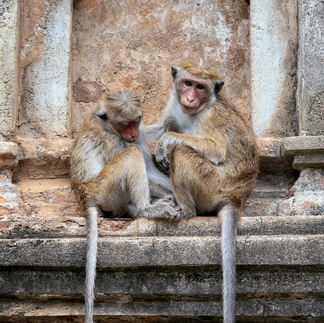













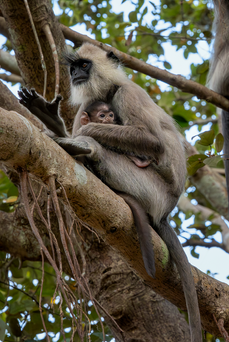









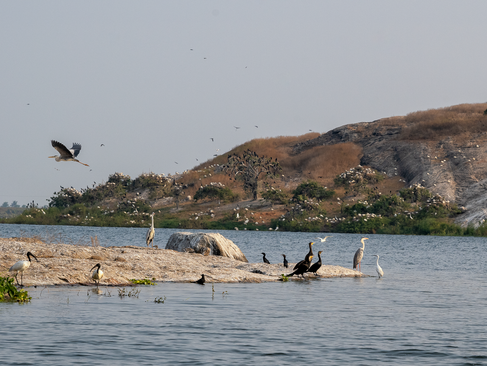





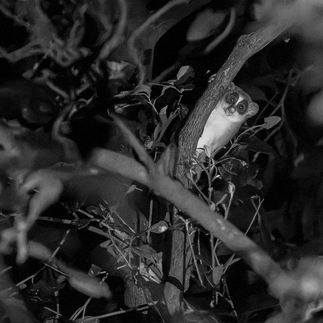



































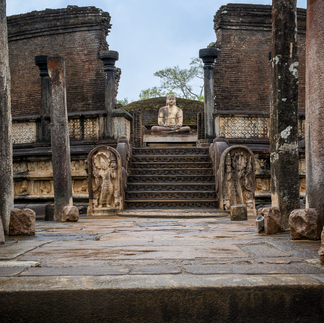

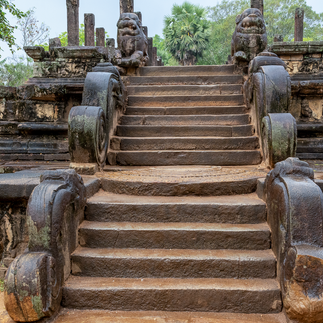









Comments